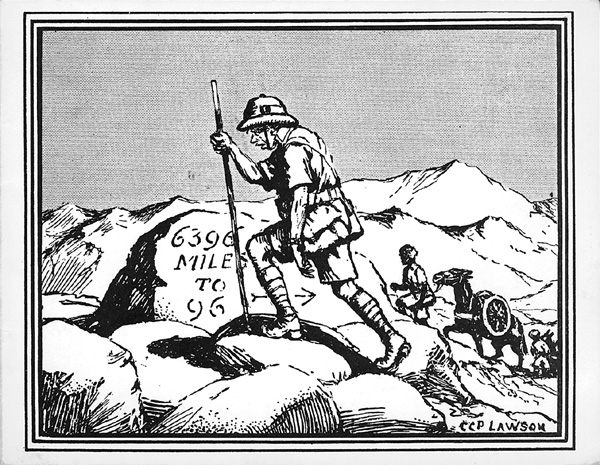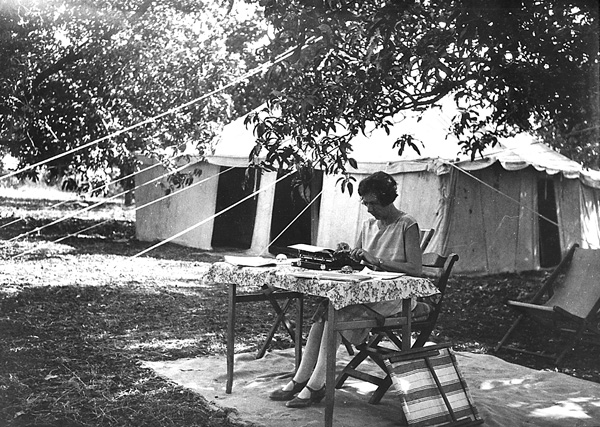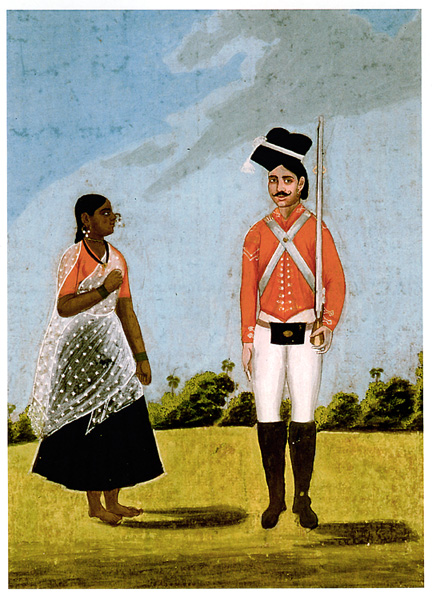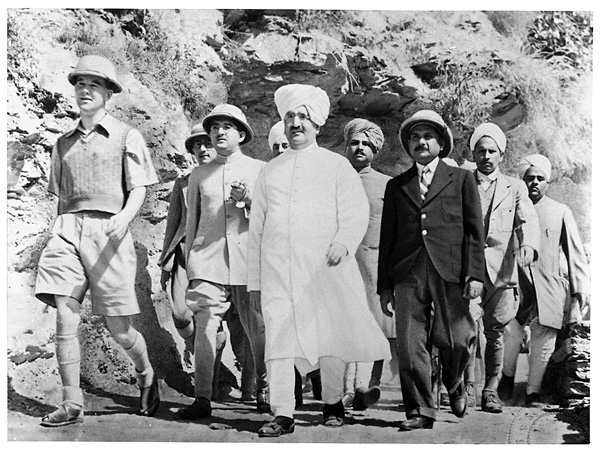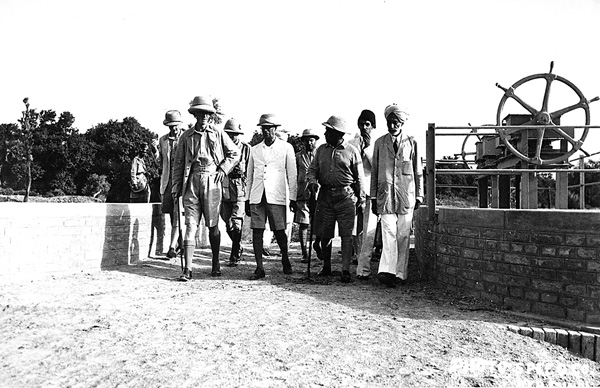|
"People at home thought it was all play and no work.
Actually we did much more work than most people at
home."
- Colonel John Hainsworth, who was posted to India in 1922 as a Royal Engineers officer, and later seconded to the Public Works Department to do civilian engineering projects |
"It was twenty-one days' march from one end of the district to the
other, five thousand square miles.
That was quite a lot of ground to cover." - Philip Mason, who joined the Indian Civil Service in 1928 and served as a district officer and in the central government Running Your Little EmpireThose who went to India remembered it as a place of hard work and recalled sometimes resenting British popular stereotypes of them as having lives of leisure--waited on by servants, spending time in posh clubs, attending balls, riding to hounds. They saw the work of empire as demanding, difficult, and at times dangerous. Numerically "thin on the ground," they often assumed great responsibilities and administered vast territories or supervised numerous underlings.The Indian Civil Service (or ICS) provided the men who governed India. Graduates of British universities who had passed an examination and interviews and then undertaken a year of training in England, most eventually worked as district officers, virtual rulers of the several hundred districts which were basic administrative units. Assisted by perhaps a few other Europeans as well as Indian officials and clerks, they might render legal decisions, determine land tenure, oversee local police, recommend public works projects, provide famine relief when necessary, even hunt leopards or tigers which menaced villagers. Their power and prestige were such that they were jokingly called "the heaven born" and likened to the Brahmans who stood at the top of the Indian caste system. Other men assumed administrative positions in such organizations as the Forest Service, which cared for great jungle preserves; the Education Service, which ran schools; the Survey of India, which mapped the subcontinent; the state-owned railways; the Police; and the Political Service (made up of already-experienced officers from the ICS or the Army), which dealt with the Indian princes who ruled large portions of India under British oversight (they also staffed British consulates in parts of China and Persia and helped administer the sheikdoms of the Persian Gulf). Others joined commercial enterprises, such as the great trading houses of Calcutta and tea, coffee or jute plantations. The military life also took many to India. India, in fact, had two large armies. The British Army posted a big part of its strength to India. But there was also the largely separate Indian Army, with British officers and Indian soldiers. Stationed in far-flung cantonments, Army officers worked in support of the civil administrators in maintaining control and engaged in the intermittent warfare which broke out in such areas as the Northwest Frontier, where potentially rebellious tribesmen kept the region unsettled. Official India was virtually all male, but wives would often play major roles in their husbands' work, touring with them, ministering to local needs, and discovering local problems. Women might also lead more independent lives in mission work or in healing professions.
Wife of an ICS officer on tour in Surat; photograph courtesy of the
Centre of South Asian Studies 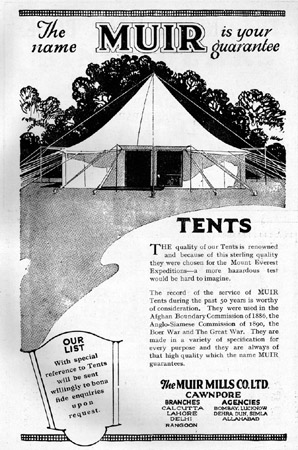 Advertisement for tents in the Hoghunter's Annual (Calcutta) for
1930.
Advertisement for tents in the Hoghunter's Annual (Calcutta) for
1930. Tents were an essential ingredient of English life in India. Officials, particularly district officers, commonly spent a significant part of the year "on tour," traveling around the areas of which they were in charge, listening to residents, dispensing decisions, and inspecting conditions. The tents were often commodious and a touring official might have virtually a multi-room canvas house; they were taken down by servants in the morning and sent ahead to the next camp site and set up, ready for the officer's arrival; such conveniences as portable metal bath tubs would be carried along. 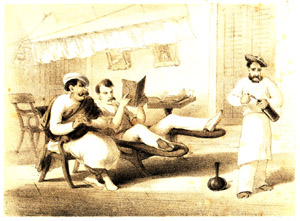 "Our
Moonshee," lithograph in Curry and Rice on Forty Plates by
George Francklin Atkinson; 3rd edition (London: Day and Son, 1859?).
"Our
Moonshee," lithograph in Curry and Rice on Forty Plates by
George Francklin Atkinson; 3rd edition (London: Day and Son, 1859?).
Because they needed to conduct business in Indian languages, British soldiers and administrators labored to acquire local vernaculars, through the aid of a munshi or language instructor. Atkinson's lithographs depict with dry humor life in a "typical" English "station" in the second half of the 19th century. 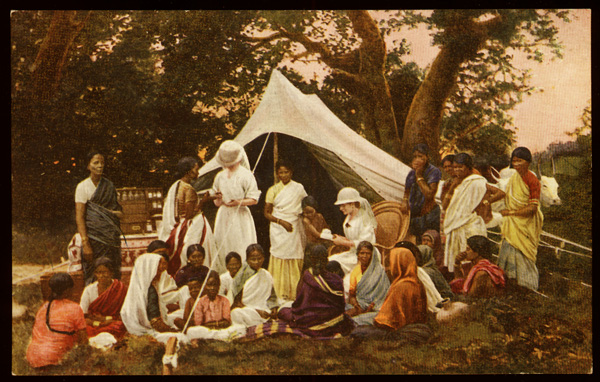 "A
Doctor's Travelling Tent"; color postcard ( London: All-British
Picture Co., Ltd.; no. 9 in the "Indian Medical" series); 20th century.
"A
Doctor's Travelling Tent"; color postcard ( London: All-British
Picture Co., Ltd.; no. 9 in the "Indian Medical" series); 20th century.
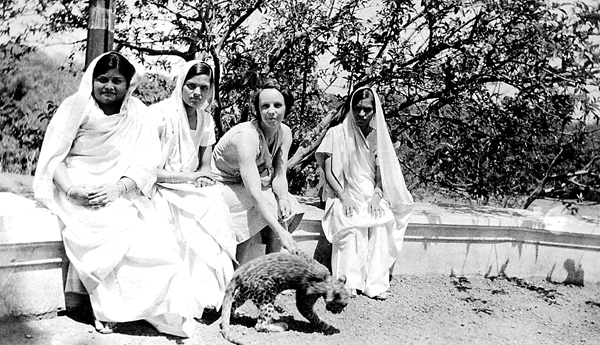 Wife of Indian Political Service member visiting women of the royal
family of a princely state under her husband's direction; photograph
courtesy of the
Centre of South Asian Studies, University of Cambridge; 1920s.
Wife of Indian Political Service member visiting women of the royal
family of a princely state under her husband's direction; photograph
courtesy of the
Centre of South Asian Studies, University of Cambridge; 1920s.
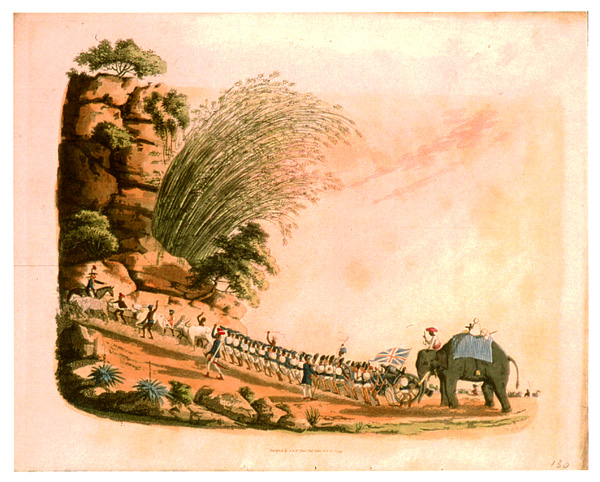 "An Artillery Elephant on Duty"; hand-colored lithograph by Captain C. Gold; 1799.
"An Artillery Elephant on Duty"; hand-colored lithograph by Captain C. Gold; 1799.
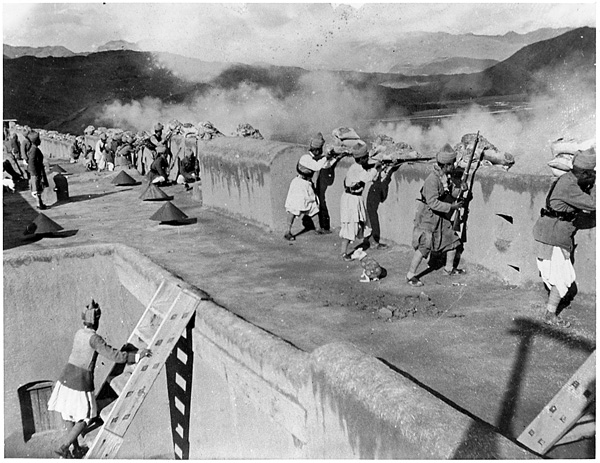 Practice firing from
the walls of a fort on the Northwest Frontier; photograph courtesy of the
Centre of South Asian Studies, University of Cambridge;
20th century.
Practice firing from
the walls of a fort on the Northwest Frontier; photograph courtesy of the
Centre of South Asian Studies, University of Cambridge;
20th century.
The Frontier was the loosely controlled area between British India and Afghanistan inhabited by various tribal groups. The British and Indian armies frequently operated in the region to maintain order and their small campaigns provided what was considered valuable military experience for the troops. 
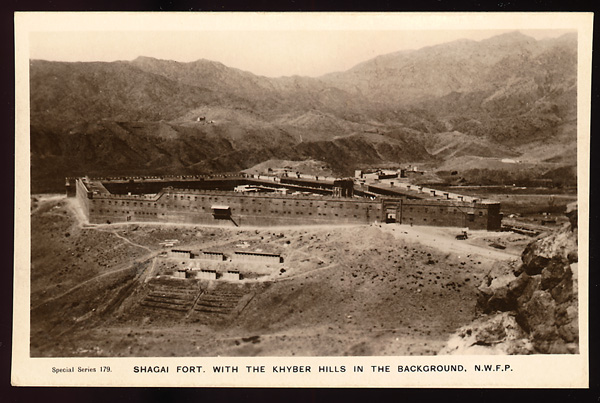 Operations and fortifiations on the Frontier: "Convoy of A.T.
Carts from Paiaza. 100 Yds. Above the Barrari Tangi"; postcard (Simla:
Army Canteen Board), 20th century; "Shagi Fort.
With the Khyber Hills in the Background. N.W.F.P."; postcard
(Peshawar: K.C. Mehra & Sons), 20th century.
Operations and fortifiations on the Frontier: "Convoy of A.T.
Carts from Paiaza. 100 Yds. Above the Barrari Tangi"; postcard (Simla:
Army Canteen Board), 20th century; "Shagi Fort.
With the Khyber Hills in the Background. N.W.F.P."; postcard
(Peshawar: K.C. Mehra & Sons), 20th century.
 English officer with his men, members of the Frontier Constabulary;
photograph courtesy of the
Centre of South Asian Studies, University of Cambridge; 1912.
English officer with his men, members of the Frontier Constabulary;
photograph courtesy of the
Centre of South Asian Studies, University of Cambridge; 1912.
The Frontier Constabulary was a paramilitary force which patrolled part of the Northwest Frontier.  An officer of the Survey of India mapping in the Himalayas; photograph
courtesy of Major General R.C.A. Edge; 1930s.
An officer of the Survey of India mapping in the Himalayas; photograph
courtesy of Major General R.C.A. Edge; 1930s.
 The young Maharajah of Bastar with his British guardians; photograph
courtesy of the
Centre of South Asian Studies, University of Cambridge; 1937.
The young Maharajah of Bastar with his British guardians; photograph
courtesy of the
Centre of South Asian Studies, University of Cambridge; 1937.
A significant portion of India continued to be ruled by Indian princes under indirect British control. When a minor ascended to a princely throne or if there was gross mismanagement or scandal in a princely state, a British official would be given more direct control. But normally a rajah or nawab had considerable independence to administer his own dominions under the influence of a British Resident or Political Agent. An Introduction Acknowledgements 1. The Passage to India | interviews 2. Running Your Empire | interviews 3. Life in the Bungalows | interviews 4. Imperial Diversions | interviews 5. Never the Twain? | interviews 6. No more India to go to | interviews |
Back to top of page | Back to Exhibitions
